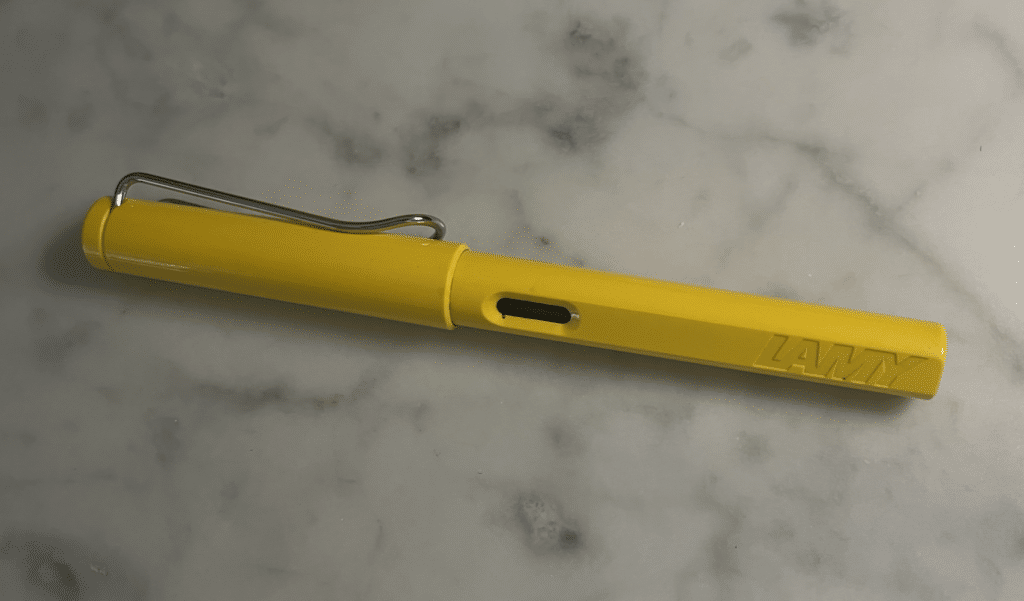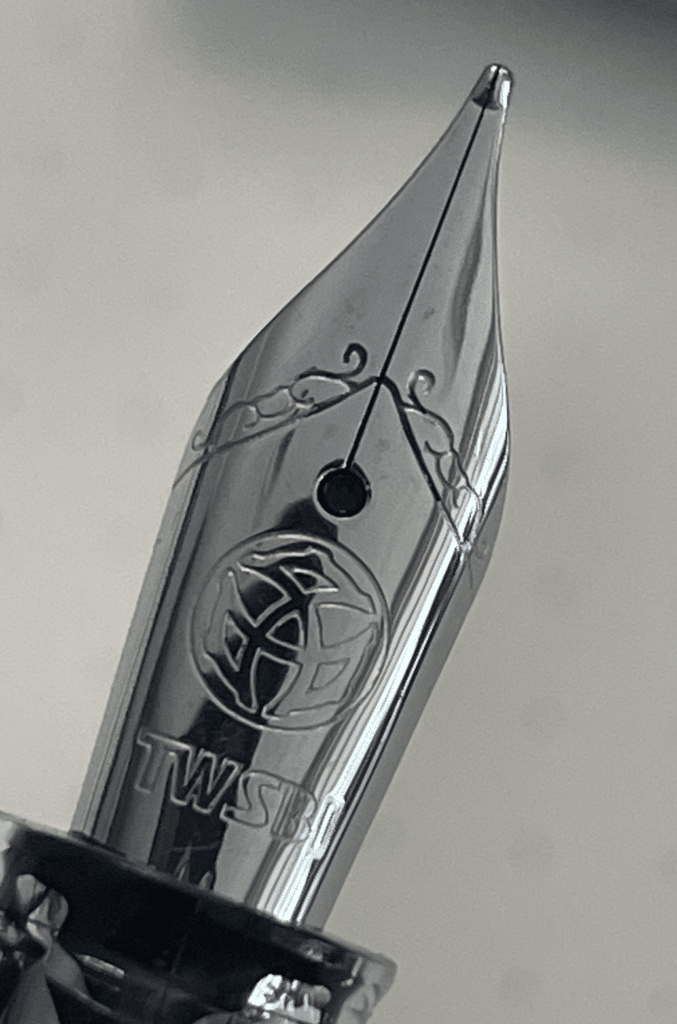There’s something special about a fountain pen – the way it glides smoothly across paper, the weight and balance of it in your hand, the elegance of its design. But if you’ve ever shopped for one, you’ve probably noticed that they can come with a pretty hefty price tag. Why are fountain pens expensive?
Let’s delve into some common myths and uncover the truth about these luxurious writing instruments.
Understanding the Fountain Pen Market
To start, it’s important to have a basic understanding of the fountain pen market. There are a wide array of options available, with prices ranging from under $10 to upwards of $10,000. That these pens are always expensive is one of many fountain pen myths.
Some companies specialize in affordable options that are widely available at office supply stores, while others cater to collectors with rare and exclusive designs.
Here are my favorite fountain pens under $50, and this is a winner under $5. So not all fountain pens are expensive.
The History of Fountain Pens
Fountain pens have a rich history dating back to the 1800s, when they began to replace quill pens as the predominant writing tool. Early fountain pens were made with simple mechanisms and materials, but as the demand for them grew, so did the desire for more complex and elegant designs.
One of the most notable early fountain pen designs was the “eyedropper” pen, which required the user to manually fill the pen by using an eyedropper to transfer ink from a bottle into the pen’s reservoir. This design was eventually replaced by the “lever filler” mechanism, which allowed users to fill the pen with ink by pressing a lever that compressed a sac inside the pen.
Throughout the 20th century, fountain pen designs continued to evolve, with advancements in materials and technology leading to more durable and reliable pens. Today, fountain pens are available in a wide range of materials, including precious metals, exotic woods, and even carbon fiber.
The Demand for Luxury Writing Instruments
Today, there is a continued demand for luxury writing instruments, particularly among those who enjoy calligraphy or simply appreciate the art of writing. Fountain pens are often seen as a status symbol, with certain brands and designs commanding high prices.
One of the most popular luxury fountain pen brands is Montblanc, which has been producing high-quality writing instruments since 1906. Montblanc pens are known for their elegant designs and attention to detail, with many limited edition models featuring intricate engravings and precious materials.
Other luxury fountain pen brands include Pelikan, Visconti, and OMAS, all of which offer a range of designs and materials to suit different tastes and preferences.
The Role of Branding and Marketing
Branding and marketing play a significant role in the perceived value of a fountain pen. Some brands have established a reputation for quality and craftsmanship over decades or even centuries, while others have created a niche for themselves with unique designs or limited edition releases.
One example of a brand that has successfully marketed itself to a niche audience is Lamy, a German company that produces sleek and modern fountain pens. Lamy has gained a following among design enthusiasts and young professionals, thanks in part to its minimalist aesthetic and affordable price point.

Overall, the fountain pen market offers a wide range of options for both casual and serious writers. Whether you’re looking for a reliable workhorse pen or a one-of-a-kind collector’s item, there is sure to be a fountain pen out there that fits your needs and budget.
The Craftsmanship Behind Fountain Pens
But what actually goes into making a fountain pen? The craftsmanship involved is a big part of the reason for their high price. Let’s dive deeper into the art of fountain pen making and explore the intricate details that make them so special.
The Art of Nib Making
The nib, or the tip of the pen that carries the ink, is arguably the most important part of a fountain pen. It’s not just about the material used to make the nib, but also the skill of the craftsman who shapes and polishes it to perfection. The shape of the nib determines the flow of ink, the thickness of the line, and the overall writing experience. A skilled nib maker can adjust the shape of the nib to suit the user’s writing style and preferences.

Nibs are typically made of gold, steel, or other high-quality metals. Gold nibs are considered the best due to their flexibility and smoothness, but they are also the most expensive. Steel nibs are more affordable and durable, but they can be stiff and scratchy. Other materials like titanium and palladium are also used to make nibs, but they are less common.
The Importance of Quality Materials
Aside from the nib, other materials also contribute to a fountain pen’s price tag. The body of the pen can be made of everything from resin to precious metals like sterling silver, gold, and platinum. Some brands even use exotic materials like carbon fiber, ebonite, and celluloid. The choice of material affects the pen’s weight, balance, and aesthetics.
The ink reservoir, which holds the ink and feeds it to the nib, also needs to be well-designed and precisely fitted. Some pens use a cartridge or converter system, while others have a built-in piston or vacuum filling mechanism. The type of filling system affects the pen’s ink capacity and convenience.
The Process of Pen Assembly
The assembly process is also a factor in the cost of a fountain pen. Some brands hand-construct their pens to ensure the highest level of precision and quality. Each part is carefully inspected and fitted together by skilled craftsmen. Other brands rely on sophisticated machinery to create consistent products at scale. However, even with automation, there is still a level of human involvement in the assembly process to ensure that the pens meet the brand’s standards.
Before a fountain pen is ready for use, it undergoes rigorous testing to ensure that it writes smoothly and consistently. Each pen is filled with ink and tested on different types of paper to check for ink flow, skipping, and feathering. Only after passing these tests will the pen be deemed ready for sale.
Download this cheatsheet and get expert solutions for the 13 most common pen problems.
Get The FREE CheatsheetThe Functionality and Performance of Fountain Pens
When it comes to writing instruments, fountain pens have a certain allure that is hard to resist. The sleek design, the smooth flow of ink, and the unique nibs all contribute to the appeal of these pens. But a fountain pen isn’t just a pretty object – it’s meant to be used for writing. So how do they perform?
The Writing Experience
Many fountain pen enthusiasts will tell you that there’s simply no comparison when it comes to the writing experience. The smooth, flowing ink and unique nib design can make even the simplest note-taking feel like a joyous occasion. The nib of a fountain pen is designed to glide across the paper, providing a seamless writing experience. The pressure required to write with a fountain pen is much less than that of a ballpoint pen, making it easier on the hand and wrist, especially during long writing sessions.
Furthermore, fountain pens come in a variety of nib sizes, from extra fine to broad. This allows for greater customization in writing style and can make writing feel more personal and unique. The ink used in fountain pens is also available in a wide range of colors, making it easy to express oneself through writing.
The Ink Flow System
A fountain pen’s ink flow system is also engineered to ensure a consistent and effortless writing experience. The ink is pulled from the reservoir through capillary action, meaning that it’s drawn to the nib naturally rather than being forced out with pressure like a ballpoint pen. This results in a smoother and more consistent flow of ink, which is less likely to skip or blot. Additionally, the ink used in fountain pens is water-based, which means it is less likely to smudge or smear.
The ink flow system also allows for greater control over the amount of ink that is released onto the paper. With a ballpoint pen, the amount of ink released is determined by the pressure applied to the pen. However, with a fountain pen, the amount of ink released can be adjusted by varying the angle and pressure of the nib on the paper. This allows for greater precision in writing and can result in more beautiful and intricate penmanship.
The Durability and Longevity of Fountain Pens
Fountain pens are meant to last a lifetime – and they often do. With proper care and maintenance, they can be passed down from generation to generation and continue to perform beautifully for decades. The materials used in fountain pens are often of higher quality than those used in ballpoint pens, which means they are less likely to break or wear down over time.
Additionally, fountain pens are refillable, which means that they can be used over and over again without the need for replacement. This not only saves money in the long run but also reduces waste and is more environmentally friendly.
Fountain pens offer a unique and unparalleled writing experience. From the smooth flow of ink to the customizable nibs, these pens are a joy to write with. The ink flow system ensures a consistent and effortless writing experience, while the durability and longevity of fountain pens make them a worthwhile investment for any writing enthusiast.
The Collector’s Perspective
For some, the value of a fountain pen isn’t just in its functionality but in its rarity and exclusivity. That makes expensive fountain pens worth the investment.
Limited Editions and Rarity
Many companies release limited edition designs or even one-of-a-kind pieces that are highly sought after by collectors. These pens can come with a considerable price tag, but for those who are passionate about the craft, they can be valuable investments as well as objects of beauty.
One such example is the Montblanc Heritage Collection Rouge et Noir Spider Metamorphosis Limited Edition Fountain Pen. This pen, released in 2019, is a stunning tribute to the original Rouge et Noir fountain pen from 1906. It features a spider web design and a snake clip, and only 1,906 pieces were made. The pen sold out quickly and is now highly coveted by collectors.
Another example is the Aurora 88 Minerali Limited Edition Fountain Pen. This pen, released in 2020, features a unique cap and barrel made from a mineral composite material. Only 388 pieces were made, and each one is numbered and comes with a certificate of authenticity.
The Value of Vintage Fountain Pens
Similarly, vintage fountain pens can hold their value over time and become prized possessions. For collectors, there’s a thrill in finding a rare or unique piece and adding it to their collection.
One of the most sought-after vintage fountain pens is the Parker 51. First released in 1941, this pen revolutionized the fountain pen industry with its innovative design and reliable performance. Today, collectors value the Parker 51 for its history and craftsmanship, and well-maintained examples can fetch high prices at auctions and in private sales.
Another vintage fountain pen that collectors covet is the Montblanc Meisterstück 149. First introduced in 1924, this pen has become a symbol of luxury and status. Its timeless design and impeccable craftsmanship have made it a favorite among collectors, and vintage examples in good condition can command high prices.
The Emotional Connection to Writing Instruments
But perhaps the greatest value of a fountain pen is the emotional connection it can create between writer and instrument. Writing with a fountain pen can feel like a deliberate and meaningful act, a way to slow down and savor the process of putting ink to paper. And for those who cherish the art of writing, that’s worth every penny.
Many writers have a favorite fountain pen that they use for all their important work. It becomes a trusted companion, a tool that helps them express their thoughts and ideas in a way that feels authentic and personal. Some even believe that the act of writing with a fountain pen can enhance creativity and improve the quality of their writing.
In conclusion, fountain pens are more than just writing instruments. They are objects of beauty, symbols of status, and sources of inspiration. Whether you’re a collector or a writer, a fountain pen can bring joy and meaning to your life.
Liz
Hey, I'm Liz. I'm the founder of this thing. Pen-obsessed and a notebook nut, I love writing by hand. So I'm gonna talk about it on a computer.Download this cheatsheet and get expert solutions for the 13 most common pen problems.
Get The FREE Cheatsheet